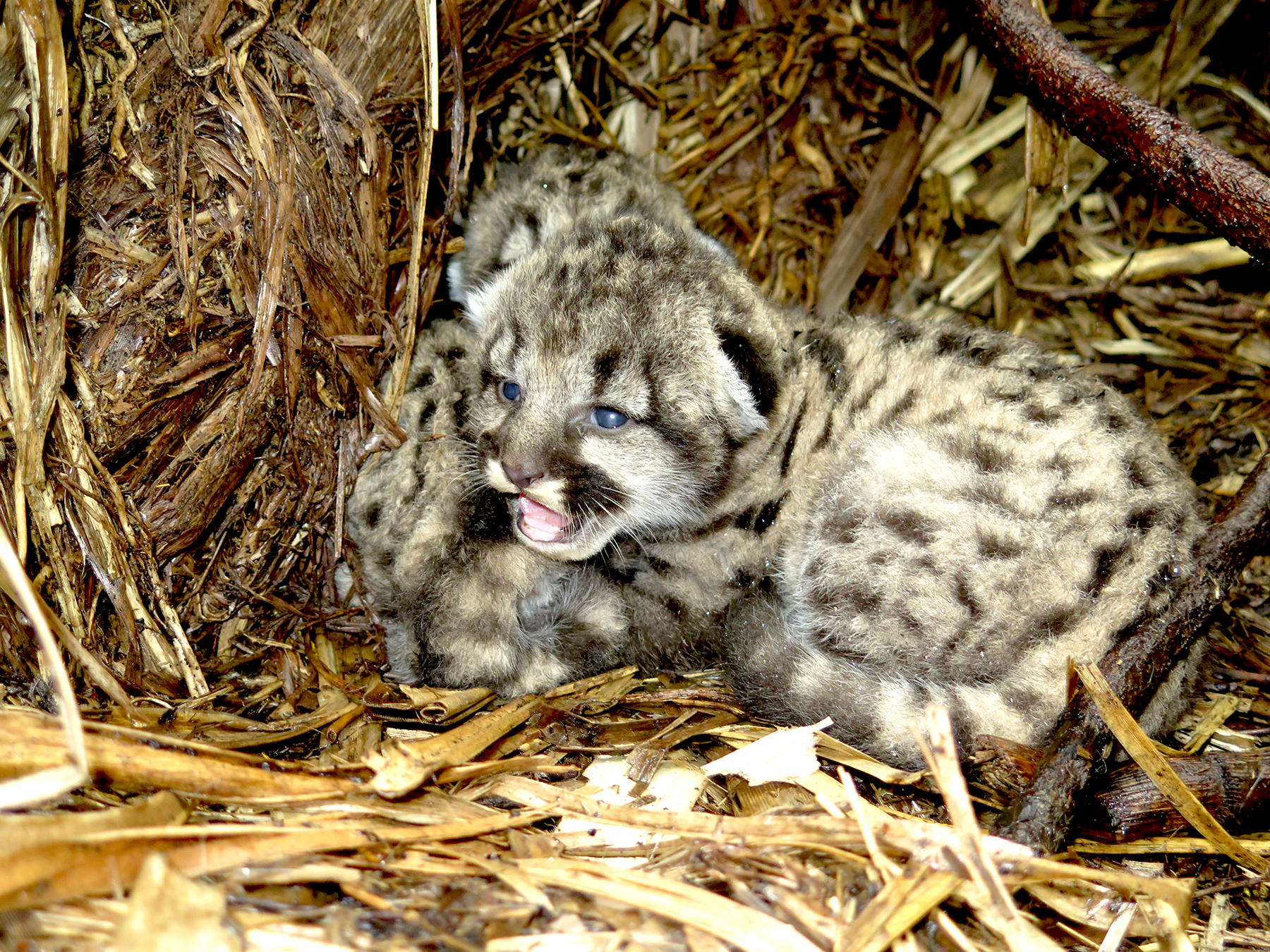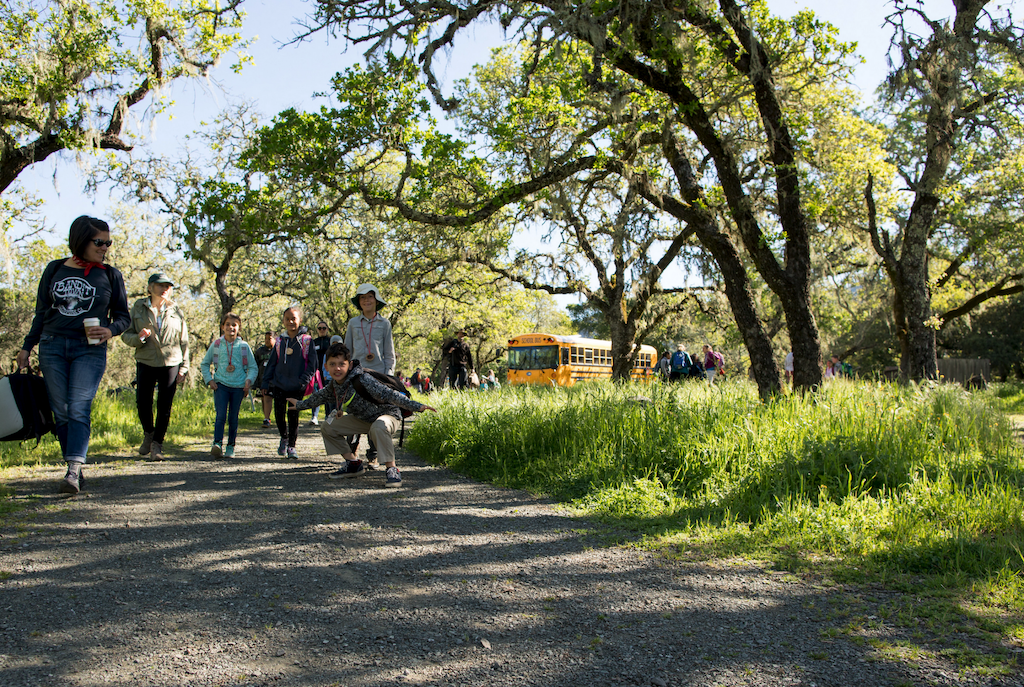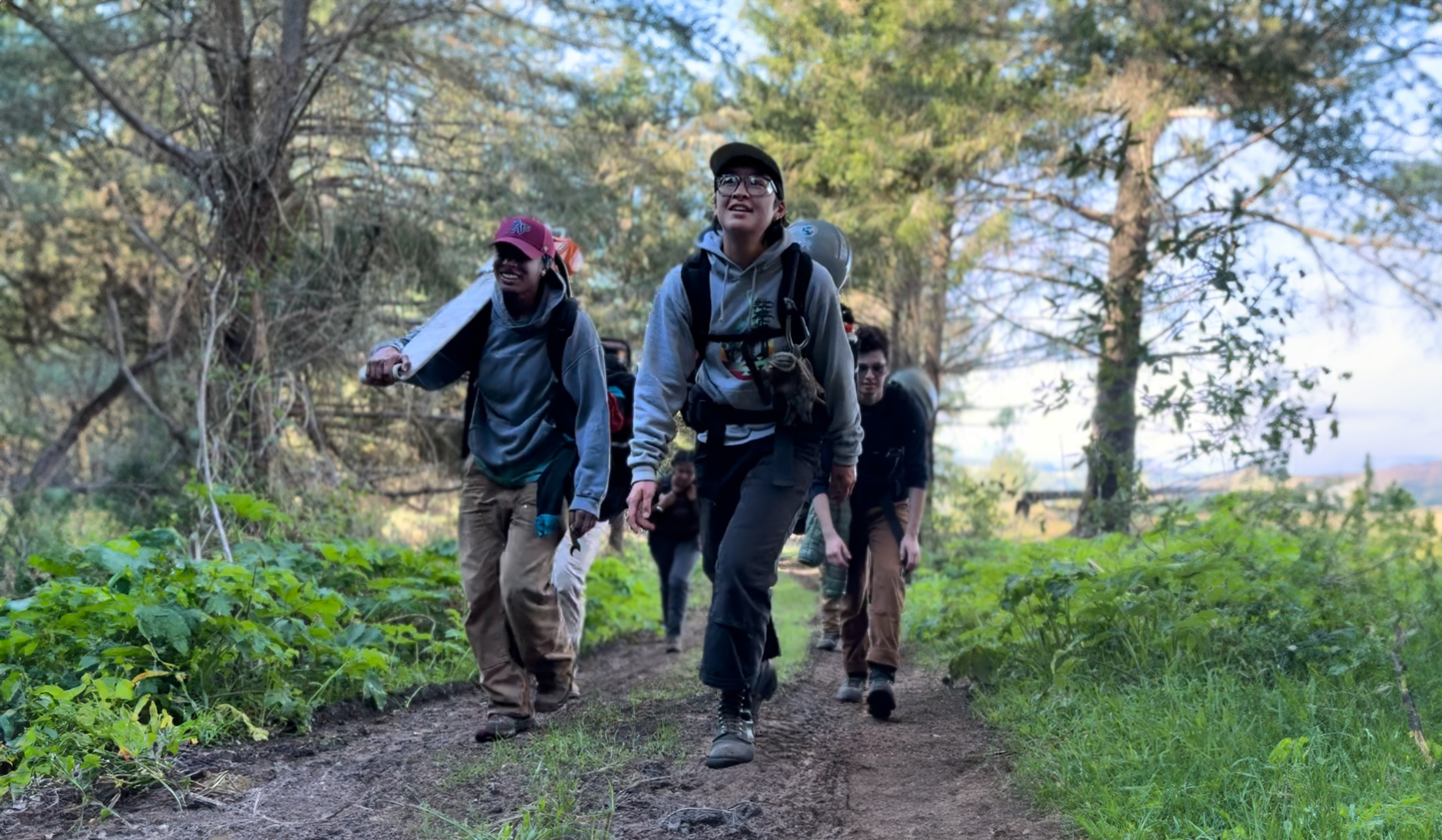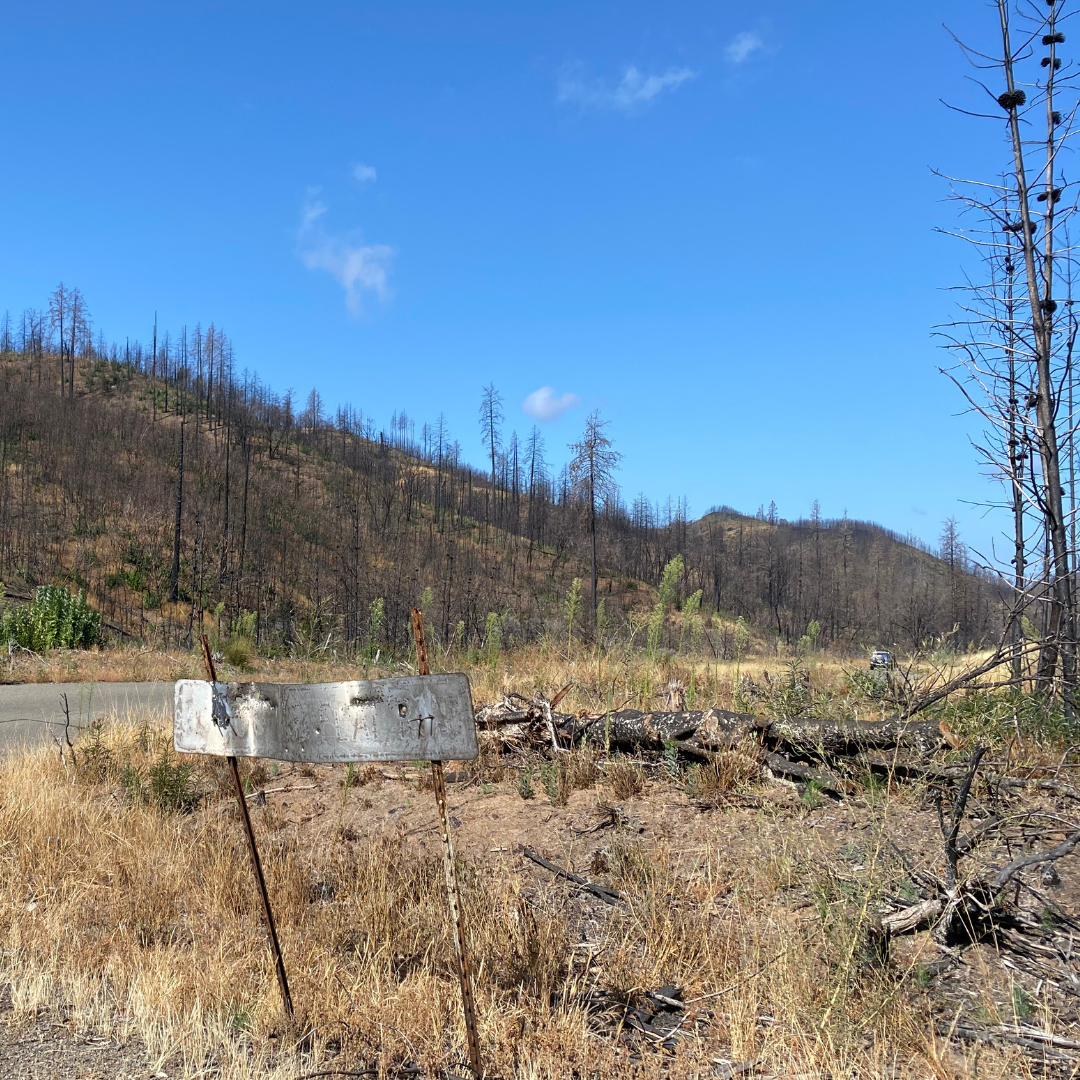4/7/17: Team discovers 10-day old mountain lion kittens belonging to P1.
On April 7 our mountain lion research team announced the discovery of three 10-day old mountain lion kittens belonging to P1, a female mountain lion enlisted in our research study. The den was located the Glen Ellen / Kenwood vicinity of Sonoma County. The team was able to capture photos and video of the tiny lions from a distance. The kittens were not touched or handled at all.
This marks the first offspring born to a subject of the study and was especially exciting for lead researcher Dr. Quinton Martins and team, who have tracked P1 for the past six months. P1 is estimated to be 10 years old. When she was collared in October 2016, she was traveling with two offspring, a male and a female, estimated to be about 11 months old at the time. By late December the juvenile lions had dispersed, but not before her daughter (P2) was also fitted with a GPS collar. “We now know that at the advanced age of 10, P1 has successfully had another litter of kittens – three this time. This is possibly her fifth litter,” said Martins after finding the den.
Regular monitoring of GPS cluster points led to discovery
GPS clusters occur when a collared mountain lion remains in one area for four hours or more. All GPS clusters of our collared mountain lions are logged. The team retrospectively visits as many of these as possible after the cat has moved on, as they usually represent a feeding site – where a mountain lion made a kill. This provides us with valuable dietary and behavioral information which will help us identify the needs of the population ensuring their future survival. Other times, these clusters represent resting sites. However, in very rare circumstances, and for an individual female mountain lion, possibly every 2 years – these represent a breeding or den site.
It was essential for the team to visit and verify what was thought to be a possible den site. In order for us to better understand the health of the mountain lion population in our study area, we learn about their reproductive success, population survival, mortality and causes of mortality. Finding a den site early in the early stages provides us with a critical starting point. The team tracked the female P1 to ensure she was nowhere near the cluster and when it was determined that she was a considerable distance from the site, the team went in to investigate. Knowing what to look for, they found the the kittens very quickly and documented them by camera, leaving the site all within 10 minutes. The kittens were not touched or handled at all.
GPS data of P1 following our visitation shows, as with by multiple other studies, no visible impact on the mother’s behavior towards her kittens or the den site.
With absolute consideration for the well-being of the kittens and the mother, the team will attempt to check in on the kittens a couple more times during the 2-month denning period to assess survival rates. After the 2-month period, the surviving kittens will begin to move around with the mom, and it becomes increasingly difficult to keep track of them and when, where and why any kittens might die. Natural mortality rates for large cats like mountain lions can be quite high (~50%), particularly in the early stages of their development.
ACR’s mountain lion study will not include collaring young kittens
Considerable outside research has been conducted on mountain lions, including monitoring of den sites. Based on multiple study results, we can feel confident that what we are doing is having an insignificant impact on these cats. Many studies handle the kittens, place mini-expandable elastic radio collars on the kittens or radio-tracking implants in them. All of these procedures have been done with little or no visible effect on the animals. In our study, we are not handling the kittens at all. Instead, we are focusing more on monitoring the mother until the kittens are about 10-12 months old. During this time the kittens will be moving with the mother. At any time after the age of 12 months, they can disperse. If we can capture and fit them with GPS collars at that time, we can continue to track their movements and survival. We would then also obtain valuable DNA data allowing us to deduce possible population bottlenecks, inbreeding depressions, lack of gene flow due to habitat fragmentation, relatedness between individuals, as well as even population estimates.






